
(Photo by NurPhoto/Getty Images)
Terry Gilliam is best known for writing and directing a number of celebrated classics with cult followings, including Brazil, Time Bandits, Twelve Monkeys, Fear and Loathing in Las Vegas, and perhaps his most beloved film, Monty Python and the Holy Grail, which was also his feature debut. One project he was never able to get off the ground — until recently, that is — was an adaptation of Miguel de Cervantes’ novel Don Quixote, which suffered a couple of ill-fated false starts and languished in development hell for 25 years. Gilliam’s struggle became one of the go-to examples of doomed passion projects, and a 2003 documentary about his experiences, Lost in La Mancha, met with widespread acclaim.
Eventually, after numerous rewrites, multiple cast changes, and several starts and stops, Gilliam was able to complete his movie, though it ultimately became something much different than he had originally imagined. Set in the present day, The Man Who Killed Don Quixote follows a commercial director (Adam Driver) who returns to the small Spanish village where he shot a student-film version of Don Quixote. There, he discovers not only that his production has left several lives in shambles, but also that the unassuming local cobbler (longtime friend and collaborator Jonathan Pryce) who played his Don Quixote has taken on the persona in real life. The new film opens in theaters for a one-night Fathom Event on April 10, and ahead of the release, Gilliam spoke to RT about the film’s long, arduous journey and gave us his Five Favorite Films… plus one extra. Read on for the full interview.
Let’s go to Pinocchio, Disney’s Pinocchio. That was a truly, utterly magical movie. The world was so beautifully detailed and so fantastical, and yet believable at every point. I love that movie. It’s really stuck with me, because it was at a level of craftsmanship that was so unbelievably high, and it’s maintained that position in my head for all the years. Great songs, great everything. Great characters. I don’t know what else one can say about it. It’s just a great story.
I think the first film I saw was probably Snow White. That’s the advantage of being old. You get these films when you’re at the right age. But those two in particular really, really stuck with me because I just hadn’t seen anything so beautifully crafted. The great thing, it made me a big fan. It took me years to discover that Cliff Edwards was the voice of Jiminy Cricket. I always loved “When You Wish Upon a Star,” and he was singing that. Now I’m a great fan of Cliff Edwards. His music is brilliant, but most people have forgotten him. I just think he was known as a singer, and he played the ukulele. He just ended up with a wonderful voice. I think his voice was also used in one of the other Disney films, which I can’t remember. But it was his singing that is just right. I think that’s Pinocchio.
I saw Pinocchio maybe 20 years ago again, and what amazed me about it is how, as a child, I remembered this vast universe, huge world. In fact, it’s tiny. You go from Geppetto’s workshop and the little village to the bad boys’ island just like that. Bing. It’s so tight the way that they do it. The next thing, you’re in Monstro’s belly. It’s a great one to watch just to see how succinct you can be and still create a universe. It’s a lesson I’ve never learned, the succinct part.
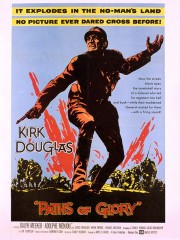
I’m just trying to do ones that really stuck with me. Paths of Glory. I was, I don’t know, probably 13 or 14, and it was a Saturday matinee at the local cinema, and all the kids were dumped there by their parents to keep them out of the way on Saturday afternoons. I was sitting there, and this black-and-white thing came on. I was utterly blown away, because it was the first film that I really appreciated the injustice in the world that’s waiting for all of us, and just the tracking shots through the trenches. My version in Brazil in the Clark’s Pool was all about the shots from Paths of Glory.
I remember going to school on Monday, telling everybody, “You’ve got to go see this movie.” Nobody did, because it was too serious. Everybody was basically normally going to see Dean Martin and Jerry Lewis movies, which I also loved. That’s the pratfall side of my nature.
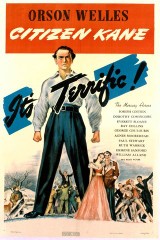
Probably somewhere along there, Citizen Kane reared its head. Once you see that, either you want to be a movie director, or you just want to give up, one of the two. He got it right. He did everything right. Then when you think he was only, what, 25 years old at that time? Extraordinary. I think that’s when I became obsessed with wide angles and deep focus. That was a new world for me. It’s probably those two films, that and Paths of Glory, really pushed me into wanting to tell stories on film, because they had such an effect on my life.
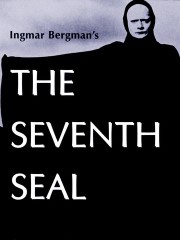
The next one, I think we got to go to Bergman. We go to go to Seventh Seal. Seventh Seal just knocked me dead. On many levels, it’s such a simple film. You’ve got Mary and Joseph, the young people with their little traveling theater, and then you’ve got the knight. I think it was the way he dealt with the Middle Ages and intrigued me with Death there at playing chess. Those were images that just stuck in my head.
It was funny. When I was doing Parnassus, I went back and looked at it, because I was trying to remind myself what Mary and Joseph and their little traveling theater was like. I had forgotten so much detail. That was just a really important film, and Max von Sydow was something… The first time I had seen basically a non-American actor at work. He looked different. He behaved differently. Because, you know, I grew up with Dean Martin, Jerry Lewis, Doris Day, Rock Hudson — shiny teeth and beautifully combed hair and all of that nonsense. Something profound was going on in that movie without pointing fingers at anything. It just did it. The squire — that was Gunnar Björnstrand, I think — was just a great character, the cynic in the midst of it all. I remember when he was talking, when he was in this church, and all the frescoes are there, and it’s just profound filmmaking.
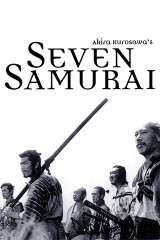
I think I’ll probably have to go to from Seventh Seal to Seven Samurai. With Kurosawa using the tracking shots, the way he… the energy, just the kinetic energy on screen was amazing, especially with Japanese-style acting, which is very structured and very formalized, which then breaks out, and you’re slashing somebody in half. That is pure filmmaking. I just thought, “It’s just beautiful.” Again, another movie that’s about texture, and it’s a very different texture than you get growing up in America. That began my love affair with things Japanese.
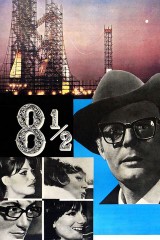
Then we leap to 8 1/2. Boom.
Just classic after classic here…
I steal from only the best. [laughs] There’s Fellini with a whole new world opening up, a whole new way of using the camera, and people suddenly looking into the lens and smiling as if the camera is another character in the piece, and all those faces, the worlds he created. It was the first film I saw that I felt, “This is what a director’s life is like.” I know later Truffaut did his Day for Night, which was a very sweet film, but it didn’t capture the pressure that directing is. I suddenly felt that’s what film directing is like, what’s going on in that movie. It’s always stuck with me and has proved to be true.
It’s like with Marcello going down the corridors doing his silly little dances, anything to avoid these people that are wanting things from him. It’s exactly what film directing is about. For anybody who wants to direct a film, they must just watch that film again and again. The last shot, when he’s being dragged towards the incomplete set that he could never afford to build in reality — he’s being supported by a couple of his aides, then he breaks free, and they grab him again. He’s forced to go and finish his film. It was that beautiful, circular dance that goes on with the little boy in his white outfit conducting it all. It’s sublime filmmaking, is all I can say.
RT: This movie is pretty widely known as one of those projects most people thought would never be completed. How does it feel, now that it’s finally done?
Gilliam: Well, it’s out of my life. I got rid of it. It was like a disease. That really is what it feels like. I’m relieved that I like the film. That’s what pleases me. It’s nice that a few other people, or maybe a lot of people — that depends — like it as well, because the horrible thing about carrying it around that long was the growing fear that whatever I did would disappoint people, because if they had been waiting 20 years, their imagination is going to have plenty of time to grow. I just knew I’m going to disappoint a lot of people. That was terrible. Luckily, I’ve read a couple of reviews that proved that I was right. I disappointed. [laughs]
That is just cheating. I think people who went to see the film should forget that it took 30 years to get made, because it’s just a film that I finally got out. The film, the final film that’s made, is a result of a couple years of work, and that’s it. All the stuff that precedes that is kind of meaningless, to be quite honest. Once you’ve finally got the cash, you can go off and shoot it, and then you survive shooting outside for almost the entire film without nature destroying you. It is what it is.
For me, Quixote has never been one idea, one script that I had 30 years ago that I’ve clung onto. It’s constantly grown and changed and shifted, depending on circumstances and who’s involved. That’s what filmmaking is about. I’m in no way a purist about anything. It’s just something I managed to get done in the last couple of years, and I’m really pleased with it.
RT: Despite the hardships you endured bringing it to the screen, you must have been so excited to finally be shooting the thing. Am I completely off base about that?
Gilliam: Completely. [laughs] The first couple weeks were horrible because this weight of expectations was killing me. It really limited what I was doing. I really was struggling to decide this, that, or the other thing. Luckily, after a couple of weeks, you’re just in the rhythm of things. You’re just dealing with a disaster that just occurred 10 minutes before, so you forget about all of that, but I just knew it’s going to disappoint a lot of people. Whatever they thought it was going to be, it isn’t. It is what it is, is all it is.
All I know is, I think we ended up with a bit of script that we had way back when. We ended up with the best cast imaginable. It was the thing that actually carried me through most of the shoot, that whatever I felt my failings were, I just felt the cast is so brilliant that whatever happens, that will pull the audience through. I still feel that. I think Adam and Jonathan are spectacular, and Stella and Olga and Joanna and Jordi Mollà — every one of them is crackers. It’s just great.
RT: I have to imagine that, throughout the process if filming this, part of you had to be wondering, “OK, what’s going to go wrong this time? When is this all going to fall apart?”
Gilliam: That is the constant fear, because I know I’m getting away with murder. “How much longer can I pull this off?” Actually, here’s the funny thing that happened. The weather was good for us, because we were outside. We were exposed the whole time. We didn’t have weather cover most of the weeks, actually. We were right on the edge the whole time, and the weather held until we got to it, the biggest scene in the whole thing, which is at the end with the burning of Santa Cathartica, and the castle with all of those extras — there was 350, all in costumes — I mean, the most expensive part of the film, and of course, that night it rained. [laughs] We had to postpone, and we lost a day. But I thought, “Nature has got a sense of humor, is all I know.” It suckered me in, thinking it’s going to be OK. “Wait until you get the most difficult, expensive part, and now f–k you, Gilliam.”
RT: When did you first realize this film was becoming your own personal windmill giant?
Gilliam: I don’t know. It must have been after 2000 when it all collapsed. I went off and did something else, and then it was more about the fact that Quixote wouldn’t leave me. It was like every time I’d finish another film, I would pause, and there would be that old fart waving, saying, “Come on. Let’s get to work.” That’s what happened. At a certain point, you’ve expended so many years, and it just feels you’ve got to finish it. Luckily, I had Orson Welles up there as my competitor, and I thought, “He couldn’t finish his, and I’m going to f–king finish mine.” [laughs] I had to be better than him at one thing. Maybe my film was a fraction as good as his was going to be, but it doesn’t matter. I beat him on one thing.
No, it’s a very funny thing. Tony Grisoni, we were talking about this, because we knew the comparison between Gilliam and Quixote would keep coming up. He said, “Really?” His feeling is the film is Quixote; Gilliam is Sancho Panza. I’m the guy who kept plodding along to keep the lunacy alive somehow. I tend to think there is that, because by the time we’re doing it, I’m no longer a dreamer at all. I’m not fantasizing about anything. I’m just dealing with reality, and it’s been like that for the last probably 10 years. That’s what it’s become.
RT: I think it’s probably easy for anyone who’s familiar with your work to see why you might have been drawn to the story of Don Quixote, but my understanding is that you read the novel, I think, sometime around 1989, and then immediately wanted to turn it into a film. If that’s true, what was it about the book that spoke to you so powerfully that you just felt that intense need to adapt it?
Gilliam: It was actually slightly backward from that. I think I had finished Munchausen, and what am I going to do next? Quixote has always been in the zeitgeist — there’s Quixote, one of the great iconic figures, and I’ve always been partial to madmen and fantasists. I literally just called up Jake Edwards, who was the executive producer of Munchausen and said, “Jake, I got to two names for you. One is Gilliam, and the other is Quixote. I need $20 million.” He says, “You got it.” It was as simple as that. I had the guarantee of $20 million before I read the book.
Then I sat down and read it, and several weeks later, I realized, “What the f–k have I done? This is crazy. I don’t know how to even begin here because it’s such a massive work.” But I started working with Charles McKeown, who had written Munchausen with me, and we started throwing it around. It was a very different idea back then. It was really basically about several old men sitting around in a plaza in some little village in Spain, and all they were saying to each other, “If only I had done this here. If only I hadn’t done that.” It was the “if only” story, and one of them says, “I’ve had enough of this stuff. I’m going to die soon, so before I die, I’m going to go and do whatever it is ‘if only,’ that we’ll throw the ‘if only’ out of the equation.” That’s how we started writing it. That’s where it started.
But then I realized the problem was going to be, how do you convince a modern audience that a guy from the 17th century is completely enthralled with stories from the 12th century? Because your period costumes, a modern audience wouldn’t be able to distinguish between the two. That then led to the next step, which was, let’s have a modern guy who becomes the Sancho Panza, the man who we can all identify with, who takes us through. Then I went into Connecticut Yankee in King Arthur’s Court. End of story, bonk on the head, you end up in the 17th century. That’s where we were with the Johnny Depp/Jean Rochefort version. I don’t know how many years ago we made the leap to keep it modern, because that would be cheaper. Planes could fly over, and they wouldn’t f–k up the film for us. [laughs]
Then it was this idea that we see what he was like before he’d become a cynical, corrupted commercials director, when he was young and innocent, and he made a film, as we do in the movie. That seems to be a much more interesting way of approaching it, and then it also made the character of Toby more tied in with a sense of guilt, because he’s created this monster in Quixote, and so they’re trapped together. That helped. All of these things started developing.
It was always just this balance game of trying to keep it fresh and be true to the heart of the book, the essence of the book. We’d pick bits that we liked from the original stories and use them, and yet we weren’t trapped in that. We didn’t have to ever become pedantic about it. It freed us up, because you spend your time always trying to escape from those great authors, whether it’s Hunter Thompson or Cervantes. It all was quite step by step. It makes sense when I look back on it. At the time, we were just trying to keep it fresh in our own minds and trying to solve enough problems.
RT: You’ve said that the way the narrative shifted over the years, it came to be about the way movies can damage people, and I’m wondering if that was directly influenced at all by what you went through, trying to get the movie made.
Gilliam: No, it wasn’t. What it was about was our experience making Holy Grail in Scotland. Because we had come up to Scotland, and we were working in this little village called Doune, where they had a castle and all. We really f–ked up a lot of people’s lives, because girls trailed the crew back to London, marriages broke up, all sorts of things happened as a result of a film crew coming to a small village. So that’s what was in my mind, not my own experiences necessarily.
It was also the other idea of what films do, is that films replace those books that Quixote was reading, which were about knights and heroics and maidens and blah, blah, blah. That’s what movies do now. I find I don’t know how X-Men or Avengers are affecting young people’s lives. Do they believe any of it? Do they want to be like that? I don’t know.
RT: This isn’t the only film project of yours that ran into problems during the development process. What made you stick with this one more so than any of the others?
Gilliam: Well, it was probably Orson Welles again. It’s the idea that even Orson Welles couldn’t finish his. [laughs] But I feel a bit more responsible when I take on a great book that somebody else has written, and I feel, “Is there a way I can actually bring this to life again for a modern audience?” I want to encourage people to read. When I think about Munchausen, it was the book. Fear and Loathing, it was the book. It’s really what triggers me a lot, taking on something that I think is important, make a film about it, and maybe it’ll lure a few people back to actually look at the original material to see what it does to them.
RT: Does The Man Who Killed Don Quixote hold any sort of special significance to you?
Gilliam: I don’t think so, no. Now that I’ve managed to pull it off, that seems to be enough. It’s still too close to me, as well, because always the last film is your favorite film. It always works that way with me, and I can’t wait to see it in theaters to see what I really think about it. But it really is like that. I don’t watch my films because I really want to get to the point that I’ve forgotten what they are or what happens, so I can be like a normal audience and judge them as somebody who knows nothing. I’m waiting for that moment on Quixote. I’m still too busy. My problem with Quixote is I have become that character in the scene where Jonathan is in the back of the truck with the dirty sheet, and the film is playing again and again and obviously having to retell the tale. That’s what I’ve become. You have to be very careful of what you write.
The Man Who Killed Don Quixote opens for a one-night Fathom Event on April 10.